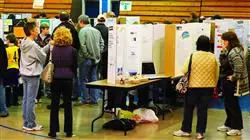University certificate
The world's largest faculty of education”
Introduction to the Program
This Postgraduate certificate in Integration of the Educational Project in the Center will generate a sense of confidence in the performance of your profession, which will help you to grow personally and professionally"

Therefore, we will analyze all the factors to be taken into account in a complete analysis of the situation. These are: social analysis, psychological analysis, cultural analysis, technological analysis, ethical analysis, business analysis, analysis of the goals and objectives of the center, analysis of students and family context, analysis of educational agents, and SWOT analysis.
After the holistic analysis phase of the situation, and the study of all the areas that must be taken into account when programming an educational project, in this sixth module we enter into one of the points that is usually forgotten in other academic plans, but that real and professional experience in the implementation of educational projects has shown that it is one of the most important areas and that the success of the action plan depends a lot on it.
In view of this, we will analyze the phase of Integration of the Educational Project in the Center. A project is not simply planted in the school, but must take root by integrating itself into the whole structure that already exists in the school, and taking into account the moments and factors of particular relevance for it.
Thus, we will begin by studying the applicable regulatory framework on which the adaptation of the educational project depends. Next, we will examine several of the possible areas or plans of the center that must be taken into account, as they have an influence on the Integration of the Educational Project in the Center. We will go deeper into the tutorial action plan, the truancy plan, the plan of attention to educational inclusion, the coexistence and equality plan, the transition plan between stages, the reading promotion plan, the school welcome plan, the internal rules and regulations, and we will conclude with a series of projects to be taken into account in this integration.
This program makes professionals in this field increase their capacity for success, which results in a better praxis and performance that will have a direct impact on the educational treatment, on the improvement of the educational system and on the social benefit for the whole community.
Update your knowledge through the Postgraduate certificate program in Integration of the Educational Project in the Center"
This Postgraduate certificate in Integration of the Educational Project in the Center contains the most complete and up-to-date program on the market. Its most notable features are:
- Development of case studies presented by experts in teaching, educational innovation, school management and marketing for teachers
- The graphic, schematic, and practical contents with which they are created provide scientific and practical information on the disciplines that are essential for professional practice
- News on school management and educational innovation
- It contains practical exercises where the self-assessment process can be carried out to improve learning
- With special emphasis on innovative methodologies in school management and educational innovation. All this will be complemented with theoretical lessons, questions to the expert, discussion forums on controversial issues and individual reflection work
- Content that is accessible from any fixed or portable device with an Internet connection
This Postgraduate certificate may be the best investment you can make when selecting a refresher program for two reasons: in addition to updating your knowledge in Integration of the Educational Project in the Center, you will obtain a Postgraduate certificate from TECH Global University”
It includes in its teaching staff professionals belonging to the field of Integration of the Educational Project in the Center, who pour into this program the experience of their work, in addition to recognized specialists belonging to reference societies and prestigious universities.
The multimedia content developed with the latest educational technology will provide the professional with situated and contextual learning, i.e., a simulated environment that will provide an immersive program to learn in real situations.
This program is designed around Problem-Based Learning, whereby the educators must try to solve the different professional practice situations that arise throughout the Postgraduate certificate. For this purpose, the educator will be assisted by an innovative interactive video system developed by recognized experts in the field of Integration of the Educational Project in the Center and with great teaching experience.
Increase your decision-making confidence by updating your knowledge through this Postgraduate certificate"

Take the opportunity to learn about the latest advances in the Integration of the Educational Project in the Center and improve the attention to your students"
Why study at TECH?
TECH is the world’s largest online university. With an impressive catalog of more than 14,000 university programs available in 11 languages, it is positioned as a leader in employability, with a 99% job placement rate. In addition, it relies on an enormous faculty of more than 6,000 professors of the highest international renown.

Study at the world's largest online university and guarantee your professional success. The future starts at TECH”
The world’s best online university according to FORBES
The prestigious Forbes magazine, specialized in business and finance, has highlighted TECH as “the world's best online university” This is what they have recently stated in an article in their digital edition in which they echo the success story of this institution, “thanks to the academic offer it provides, the selection of its teaching staff, and an innovative learning method aimed at educating the professionals of the future”
A revolutionary study method, a cutting-edge faculty and a practical focus: the key to TECH's success.
The most complete study plans on the university scene
TECH offers the most complete study plans on the university scene, with syllabuses that cover fundamental concepts and, at the same time, the main scientific advances in their specific scientific areas. In addition, these programs are continuously being updated to guarantee students the academic vanguard and the most in-demand professional skills. In this way, the university's qualifications provide its graduates with a significant advantage to propel their careers to success.
TECH offers the most comprehensive and intensive study plans on the current university scene.
A world-class teaching staff
TECH's teaching staff is made up of more than 6,000 professors with the highest international recognition. Professors, researchers and top executives of multinational companies, including Isaiah Covington, performance coach of the Boston Celtics; Magda Romanska, principal investigator at Harvard MetaLAB; Ignacio Wistumba, chairman of the department of translational molecular pathology at MD Anderson Cancer Center; and D.W. Pine, creative director of TIME magazine, among others.
Internationally renowned experts, specialized in different branches of Health, Technology, Communication and Business, form part of the TECH faculty.
A unique learning method
TECH is the first university to use Relearning in all its programs. It is the best online learning methodology, accredited with international teaching quality certifications, provided by prestigious educational agencies. In addition, this disruptive educational model is complemented with the “Case Method”, thereby setting up a unique online teaching strategy. Innovative teaching resources are also implemented, including detailed videos, infographics and interactive summaries.
TECH combines Relearning and the Case Method in all its university programs to guarantee excellent theoretical and practical learning, studying whenever and wherever you want.
The world's largest online university
TECH is the world’s largest online university. We are the largest educational institution, with the best and widest online educational catalog, one hundred percent online and covering the vast majority of areas of knowledge. We offer a large selection of our own degrees and accredited online undergraduate and postgraduate degrees. In total, more than 14,000 university degrees, in eleven different languages, make us the largest educational largest in the world.
TECH has the world's most extensive catalog of academic and official programs, available in more than 11 languages.
Google Premier Partner
The American technology giant has awarded TECH the Google Google Premier Partner badge. This award, which is only available to 3% of the world's companies, highlights the efficient, flexible and tailored experience that this university provides to students. The recognition as a Google Premier Partner not only accredits the maximum rigor, performance and investment in TECH's digital infrastructures, but also places this university as one of the world's leading technology companies.
Google has positioned TECH in the top 3% of the world's most important technology companies by awarding it its Google Premier Partner badge.
The official online university of the NBA
TECH is the official online university of the NBA. Thanks to our agreement with the biggest league in basketball, we offer our students exclusive university programs, as well as a wide variety of educational resources focused on the business of the league and other areas of the sports industry. Each program is made up of a uniquely designed syllabus and features exceptional guest hosts: professionals with a distinguished sports background who will offer their expertise on the most relevant topics.
TECH has been selected by the NBA, the world's top basketball league, as its official online university.
The top-rated university by its students
Students have positioned TECH as the world's top-rated university on the main review websites, with a highest rating of 4.9 out of 5, obtained from more than 1,000 reviews. These results consolidate TECH as the benchmark university institution at an international level, reflecting the excellence and positive impact of its educational model.” reflecting the excellence and positive impact of its educational model.”
TECH is the world’s top-rated university by its students.
Leaders in employability
TECH has managed to become the leading university in employability. 99% of its students obtain jobs in the academic field they have studied, within one year of completing any of the university's programs. A similar number achieve immediate career enhancement. All this thanks to a study methodology that bases its effectiveness on the acquisition of practical skills, which are absolutely necessary for professional development.
99% of TECH graduates find a job within a year of completing their studies.
Postgraduate Certificate in Integration of the Educational Project in the Center.
Education is a fundamental pillar in our society and it is everyone's responsibility to guarantee a quality education for the new generations. In this sense, the educational project is a key element in the management of any educational center, since it defines the strategy and objectives to achieve quality education. For this reason, TECH Global University offers you the Postgraduate Certificate in Integration of the Educational Project in the Center. This Postgraduate Certificate will allow you to develop the necessary skills to design, implement and evaluate an educational project adapted to the needs of the center and students. You will learn to identify the key elements of a quality educational project and to integrate them into the daily management of the center.
Develop the necessary skills to design and implement a quality educational project.
During the Postgraduate Certificate, you will be supported by professional Postgraduate Diploma in the design and implementation of educational projects. In addition, you will have access to technological tools and resources to enrich the learning and management of the educational project. At the end of the Postgraduate Certificate, you will be prepared to design and implement a quality educational project in your center, with the aim of improving education and the integral development of students. If you are an education professional committed to educational quality and continuous improvement, this Postgraduate Certificate is for you. Enroll now in the Postgraduate Certificate in Educational Project Integration at the TECH Global University Center and become an expert in educational project management!







